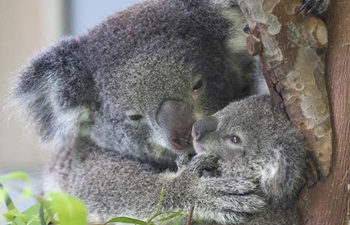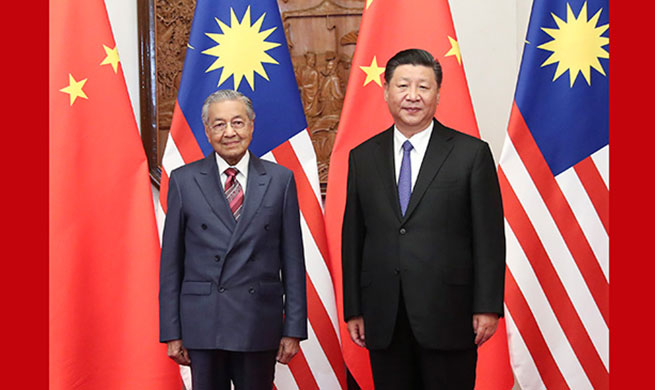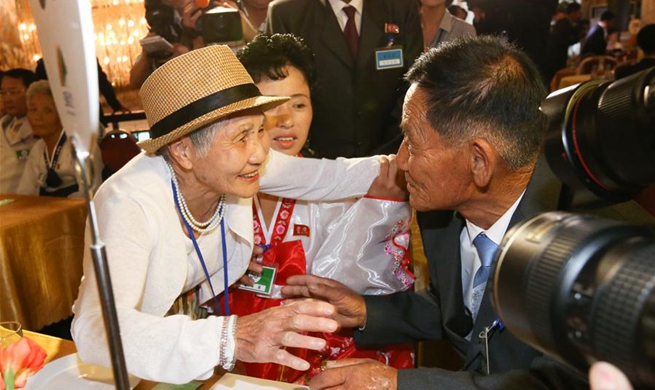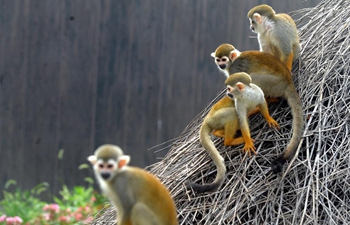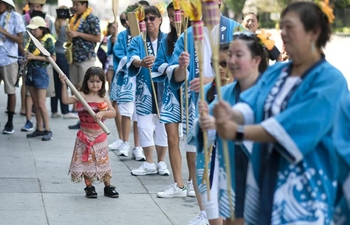NANJING, Aug. 21 (Xinhua) -- A ginger-root-shaped asteroid named Toutatis, which poses a potential threat to earth, might have formed from the merger of two smaller asteroids, say researchers from China and the United States.
The space rock, about 4,750 meters long and 1,950 meters wide - bigger than a city block - is one of the largest "potentially hazardous asteroids", said Ji Jianghui, a researcher at the Purple Mountain Observatory of the Chinese Academy of Sciences.
First spotted in 1934, then lost from sight, and rediscovered in 1989 by a French astronomer, the asteroid was named after a Celtic god, Toutatis.
"This asteroid comes from the main asteroid belt, where it was affected by the gravitational perturbations of Jupiter," said Ji, the lead scientist in the research.
Before 2012, the asteroid was in an orbit that brought it close to earth every four years. As a result, it has been closely followed by telescopes and radar. But its orbit changed after 2012 due to the gravity of Jupiter and other planets. It's estimated that it will pass earth again as close as 2.97 million km in 2069.
After successfully completing its mission to explore the moon, China's second lunar probe, Chang'e-2, which blasted off on Oct.1, 2010, rendezvoused with Toutatis on Dec. 13, 2012, at a distance of 770 meters with a relative velocity of 10.73 km per second, as the rock was sweeping by earth at a distance of around 7 million km.
It was the world's first close fly-by observation of Toutatis. The probe took high-resolution images providing a number of discoveries.
The images allowed researchers to observe the topographical features of the asteroid, showing it has two lobes, including a small "head" and a large "body." The strange shape has bewildered scientists for a long time.
After many simulations, the research team thought there might be originally one primary asteroid and a smaller one, forming a system like the earth and moon.
Once they came very close to earth, the gravity affected the orbit of the primary asteroid and its little moon, causing them to collide at a low speed and merge into the current structure, Ji said.
The new study was published in the Monthly Notices of the Royal Astronomical Society.
Ji and his collaborators have also studied how Toutatis rotates in space and revealed its geological features, showing it was essentially rubble and that the impact craters on its surface could be 1.6 billion years old.
Although Toutatis seemed to have a loose structure, Ji said, it was unlikely to fall apart, even when pulled by the gravity of nearby planets, due to its slow rotation.
Now scientists believe the threat from Toutatis is very low, but many other asteroids, whose orbits are unknown, might cross paths with earth.
"The impact threat from near-earth objects always exists," Ji said.
"Many recent observations show that about 14 percent of near-earth asteroids with a diameter larger than 200 meters have a similar structure to Toutatis."
The study of the formation of such asteroids will improve understanding of the evolution of near-earth binary asteroids, and is essential for deciding how to protect earth against their impact.
"It will also provide scientific data for China's future deep-space exploration of asteroids," Ji said.
China is the fourth space power to directly explore an asteroid, after the United States, Europe and Japan.
China is planning another space mission to explore asteroids after sending a probe to Mars in 2020.
"In order to cope with the potential threat of the near-earth objects, we need ground-based telescopes to form a monitoring, tracking and warning system, as well as space probes to conduct close investigations of asteroids, even to return samples from their surfaces to unveil their physical characteristics, interior structure and components, " Ji said.





